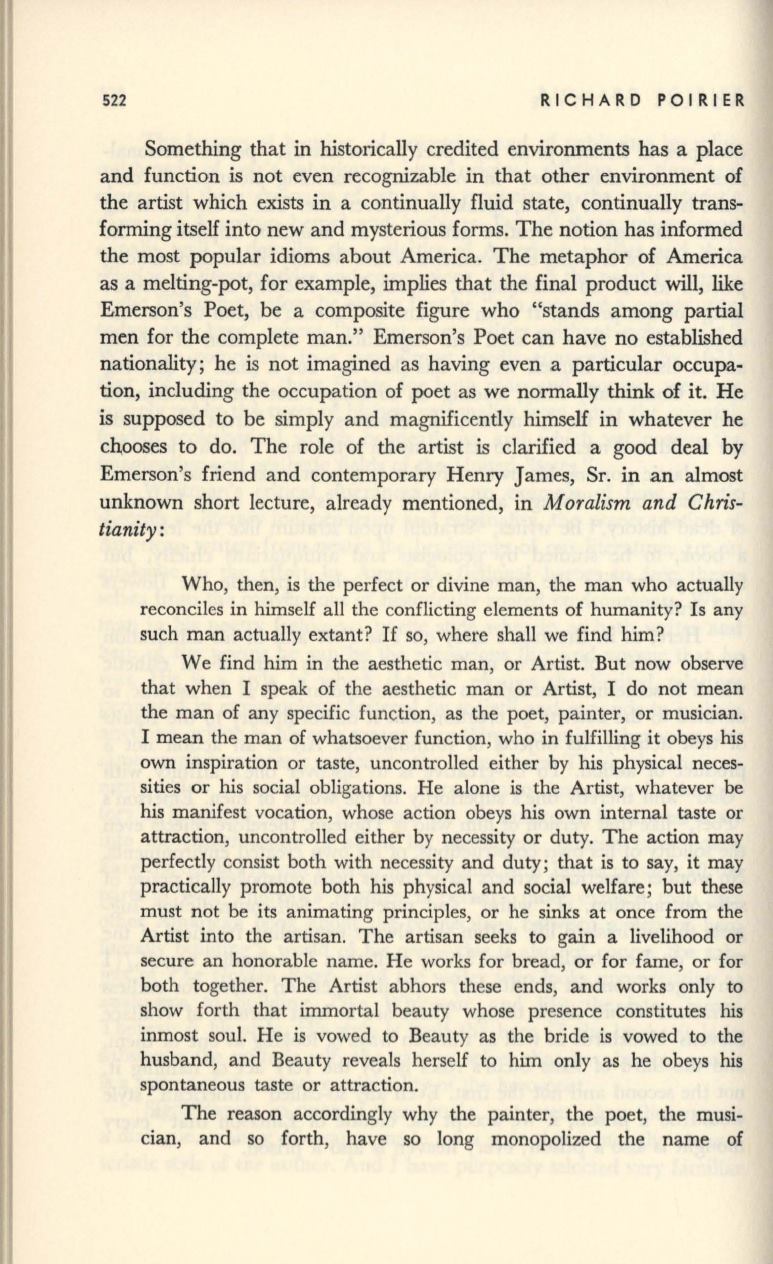
522
RICHARD POIRIER
Something that in historically credited environments has a place
and function is not even recognizable in that other environment of
the artist which exists in a continually fluid state, continually trans–
forming itself into new and mysterious forms. The notion has informed
the most popular idioms about America. The metaphor of America
as a melting-pot, for example, implies that the final product will, like
Emerson's Poet, be a composite figure who "stands among partial
men for the complete man." Emerson's Poet can have no established
nationality; he is not imagined as having even a particular occupa–
tion, including the occupation of poet as we normally think of it. He
is supposed to be simply and magnificently himself in whatever he
chposes to do. The role of the artist is clarified a good deal by
Emerson's friend and contemporary Henry James, Sr. in an almost
unknown short lecture, already mentioned, in
Moralism and Chris–
tianity:
Who, then, is the perfect or divine man, the man who actually
reconciles in himself all the conflicting elements of humanity? Is any
such man actually extant?
If
so, where shall we find him?
We find him in the aesthetic man, or Artist. But now observe
that when I speak of the aesthetic man or Artist, I do not mean
the man of any specific function, as the poet, painter, or musician.
I mean the man of whatsoever function, who in fulfilling it obeys his
own inspiration or taste, uncontrolled either by his physical neces–
sities or his social obligations. He alone is the Artist, whatever be
his manifest vocation, whose action obeys his own internal taste or
attraction, uncontrolled either by necessity or duty. The action may
perfectly consist both with necessity and duty; that is to say, it may
practically promote both his physical and social welfare; but these
must not be its animating principles, or he sinks at once from the
Artist into the artisan. The artisan seeks to gain a livelihood or
secure an honorable name. He works for bread, or for fame, or for
both together. The Artist abhors these ends, and works only to
show forth that immortal beauty whose presence constitutes his
inmost soul. He is vowed to Beauty as the bride is vowed to the
husband, and Beauty reveals herself to him only as he obeys his
spontaneous taste or attraction.
The reason accordingly why the painter, the poet, the musi–
cian, and so forth, have so long monopolized the name of


